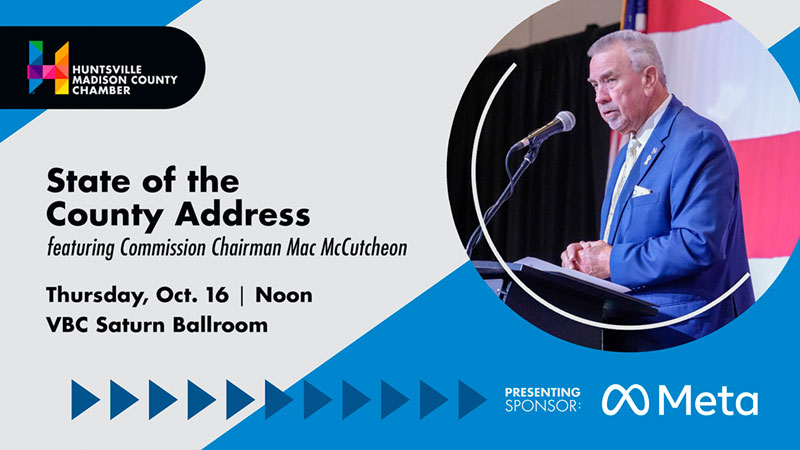Huntsville: looking back 30 years ago, to now
By Deborah Storey
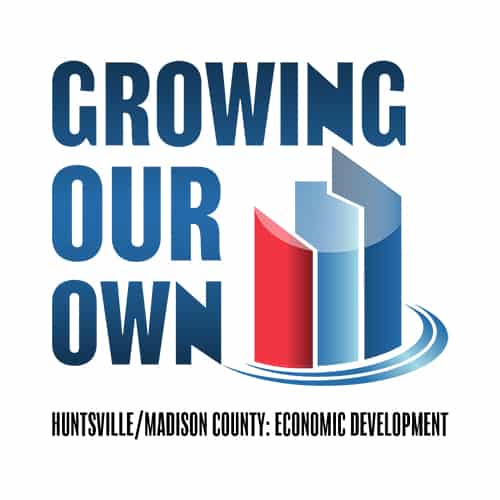 Thirty years ago, visitors to downtown Huntsville could dine at Bubba’s Restaurant on Washington Street, stop for ice cream at Gorin’s next door and stroll past law offices – lots and lots of law offices – for fun.
Thirty years ago, visitors to downtown Huntsville could dine at Bubba’s Restaurant on Washington Street, stop for ice cream at Gorin’s next door and stroll past law offices – lots and lots of law offices – for fun.
For fine dining, you needed a membership at the Heritage Club. If you walked the sidewalks with a beer, you could have been arrested. Going home meant getting in the car and driving back to your neighborhood.
If you worked downtown, usually it was because you were employed by local government or one of those lawyers on the square.
But at some point a magical transformation occurred downtown, and quickly, it seems in retrospect. Tower cranes began stacking high-rise office buildings. Luxury lofts lured young professionals. Gleaming multi-story hotels sprouted to replace a deteriorated Hilton. First one, then two, then more than a half-dozen restaurants served up gourmet dining.
Community leaders who have observed downtown’s explosive growth would argue that the change was neither magic nor quick. Vision, strategy, a good local economy, and leadership helped.
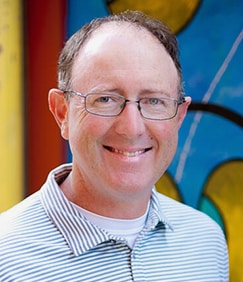
Chad Emerson, president and CEO of the booster organization Downtown Huntsville, Inc., said there isn’t a firm number for the total economic investment downtown in the last decade, “but it’s at least over $750 million.”
Publix at Twickenham Square opened in May 2014 and anchors a development with bustling restaurants and shops. Gourmet restaurants like Cotton Row, Domaine South, Purveyor, and the Poppy and Parliament cater to discriminating tastes. Belk Hudson, 301 East, and Artisan lofts offer chic urban living. Redstone Federal Credit Union opened a five-story location on Davis Circle in late 2020.
Lodging has seen the most dramatic change. In the 1990s, the number of hotel rooms available downtown was 277, according to Charles Winters, executive vice president of the Huntsville/Madison County Convention and Visitors Bureau. Those were all in the Huntsville Hilton, which opened in 1975 and closed as a Holiday Inn in 2014. Embassy Suites brought another 295 in 2006. SpringHill Suites added 149 in 2011. Homewood Suites opened 101 rooms in 2014, AC Hotel by Marriott 120 more in 2019. Downtown now has 665 hotel rooms, but 106 Jefferson Curio by Hilton opens in July with 115, and Hampton Inn and Suites later this year with 150 more. In 2022, Autograph will add 187 and Hyatt House another 145.
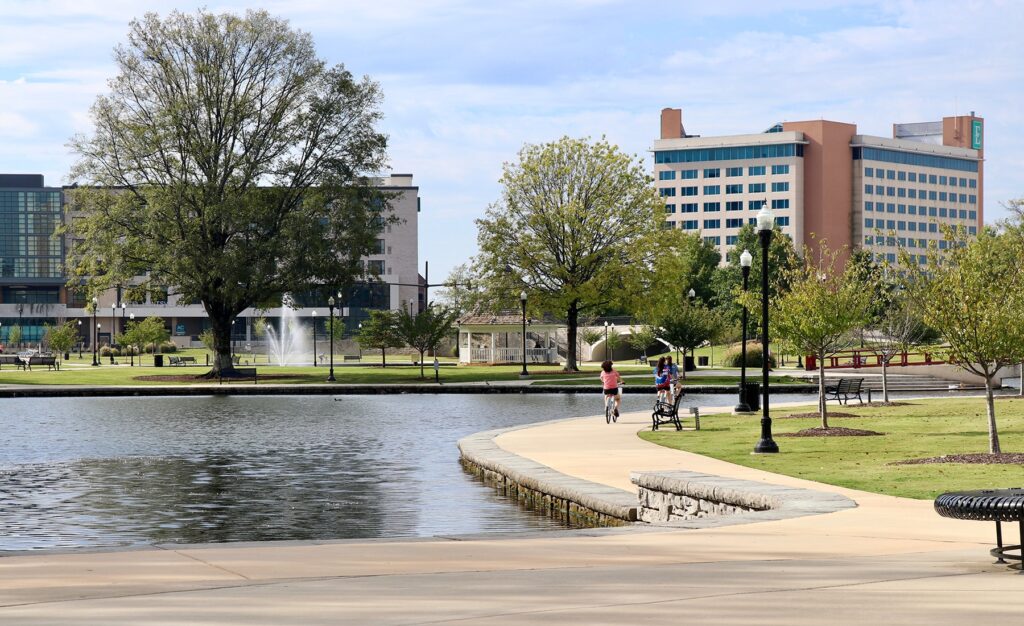
Emerson said Huntsville’s downtown appeal starts with good bones – natural assets like beautiful park spaces, interesting architecture, plus convenient access to Memorial Parkway, I-565, and the Von Braun Center. The DHI group added some creative ideas to the mix.
“We’re trying to attract people to the heart of the city,” he said, with features like pop-up parks, food events, better signs, the holiday Tinsel Trail and rental bicycles.
“All these things that encourage people to walk around and explore versus just appreciating beautiful architecture from the windshield of their car,” he said.
One concept is “third places,” Emerson said, or areas where people linger for a cup of coffee, tea, or brewery beer. Sidewalk dining – once not even allowed – attracts all demographics.
“There’s a phrase that we’ve become known for – creative placemaking,” said Emerson. It includes public art and the decorative lights that glitter across Clinton Avenue.
“When you make an emotional connection, you go back to places that you love, and people love downtown,” said Emerson.
One novel idea was adapting 20 spaces in the Clinton Avenue parking deck and ground-floor storage units across the street to accommodate small businesses.
“You’re walking by, and you see record shops, you see flower shops, you see gift shops,” Emerson said. “Now the city, when they built the new deck at Greene and Holmes, from day one they included retail.” DGX in that parking deck is Alabama’s first urban store from Dollar General – a little like a big-city bodega.
In August of 2013, city leaders passed the so-called “purple cup” open-container ordinance to create a downtown Arts and Entertainment District called Quigley, named after an old mapmaker.
“It’s really an entertainment district that allows people to walk to art walks, to walk to food truck rallies, to enjoy the architecture, while enjoying their favorite local craft beverage,” Emerson said. Walking downtown is “one of the most relaxing things you can do, so why not be able to have a glass of wine while you do it?”
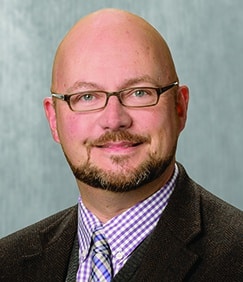
Dennis Madsen, Manager of Urban and Long-Range Planning for the City of Huntsville, points to the city’s first food truck event as significant in showcasing downtown. Even though it had only one or two trucks, “the event was mobbed,” he said.
“Personally, that felt like a turning point,” he said.
He credits DHI for innovative ideas but said it’s really a “confluence of things” that have made downtown vibrant.
“There’s kind of a national trend toward more reurbanization and rediscovery of downtowns and the parts of our communities that are historically unique,” Madsen said, as “opposed to things that you can find anywhere.”
Both Madsen and Emerson cite the city’s downtown master plan as key to its success.
“I don’t think it’s a coincidence that not long after the master plan was adopted by the Planning Commission and the City Council that you started seeing new hotels pop up, that you started seeing new development pop up, often times in the areas that we had articulated in the master plan as being places we wanted to target,” said Madsen.
In 2007, former Huntsville City Schools Superintendent Dr. Mary Jane Caylor became executive director of Big Spring Partners, an organization that would become Downtown Huntsville, Inc.
In the 1940s, ’50s and ‘60s, downtown was in its heyday, she said, but by the 1970s, there was a fear among leaders that businesses would board up and move to the suburbs.
When the I-565 spur opened in 1991, it had a “huge effect,” she said. “It brought people directly into downtown.”
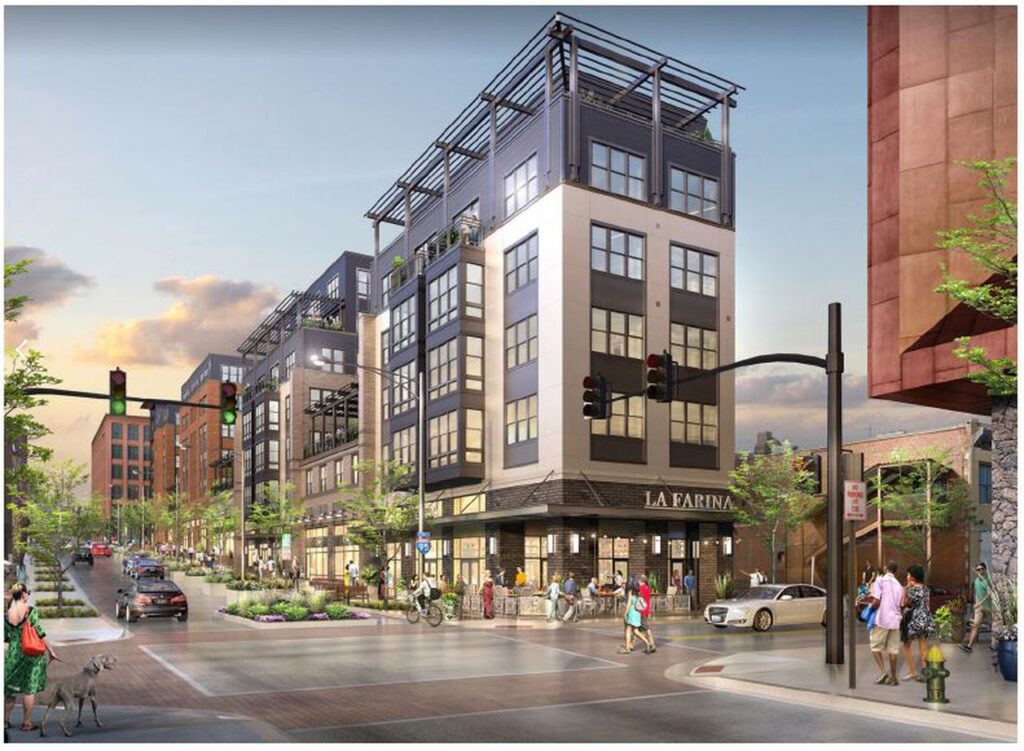
Expansions of the Von Braun Center and arts offerings are factors, too, Caylor said. So is the fact that it’s “the seat of city and county government.
“It was the vision of the leadership to have a community of live, work, and play, and I think it has really come to fruition,” Caylor said.
There’s still a need for more office and living space downtown, Emerson and Madsen agree.
“Just about every market category, we have unmet demand for,” Emerson said. “The biggest one right now is for-purchase condos.” Downtown office vacancy is just two percent, he said.
The last major piece of the downtown puzzle was revealed in June. City leaders announced a partnership with New York City-based Rocket Development Partners, LLC, to develop the 13-acre site of the former Coca-Cola bottling plant at 514 Clinton Ave.
Shane Davis, Huntsville’s director of Urban and Economic Development, called the location the “gateway to downtown.” As the largest open property available for development downtown, it will include retail, offices, housing, and a garage as part of a $235 million project.
There’s still one open slot in the puzzle.
The surface parking lot on Clinton Avenue near Huntsville Utilities is “the next big site that the master plan process identified that we need to develop,” said Emerson.

This article appears in the August 2021 issue of Initiatives magazine, a publication of the Huntsville/Madison County Chamber.


